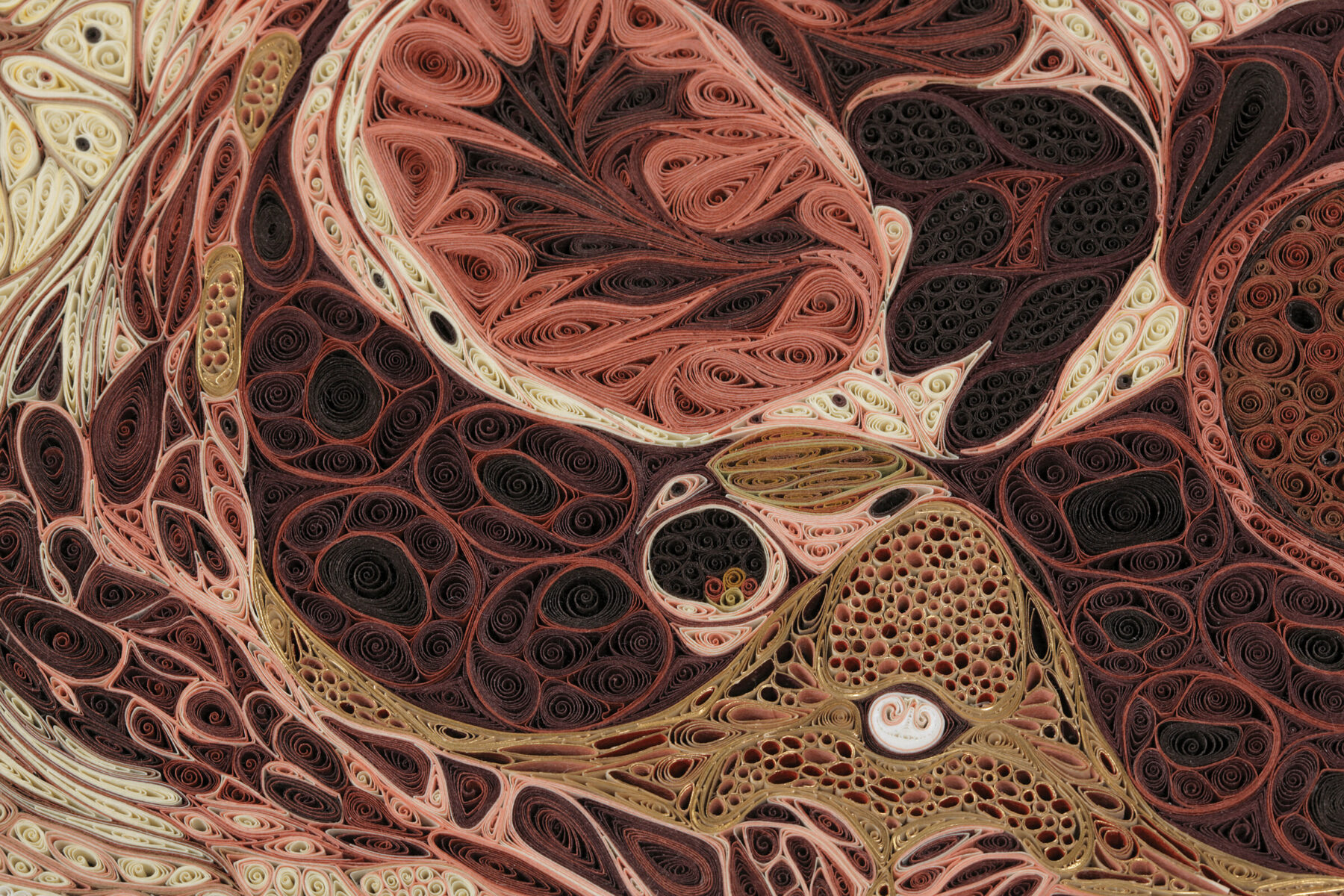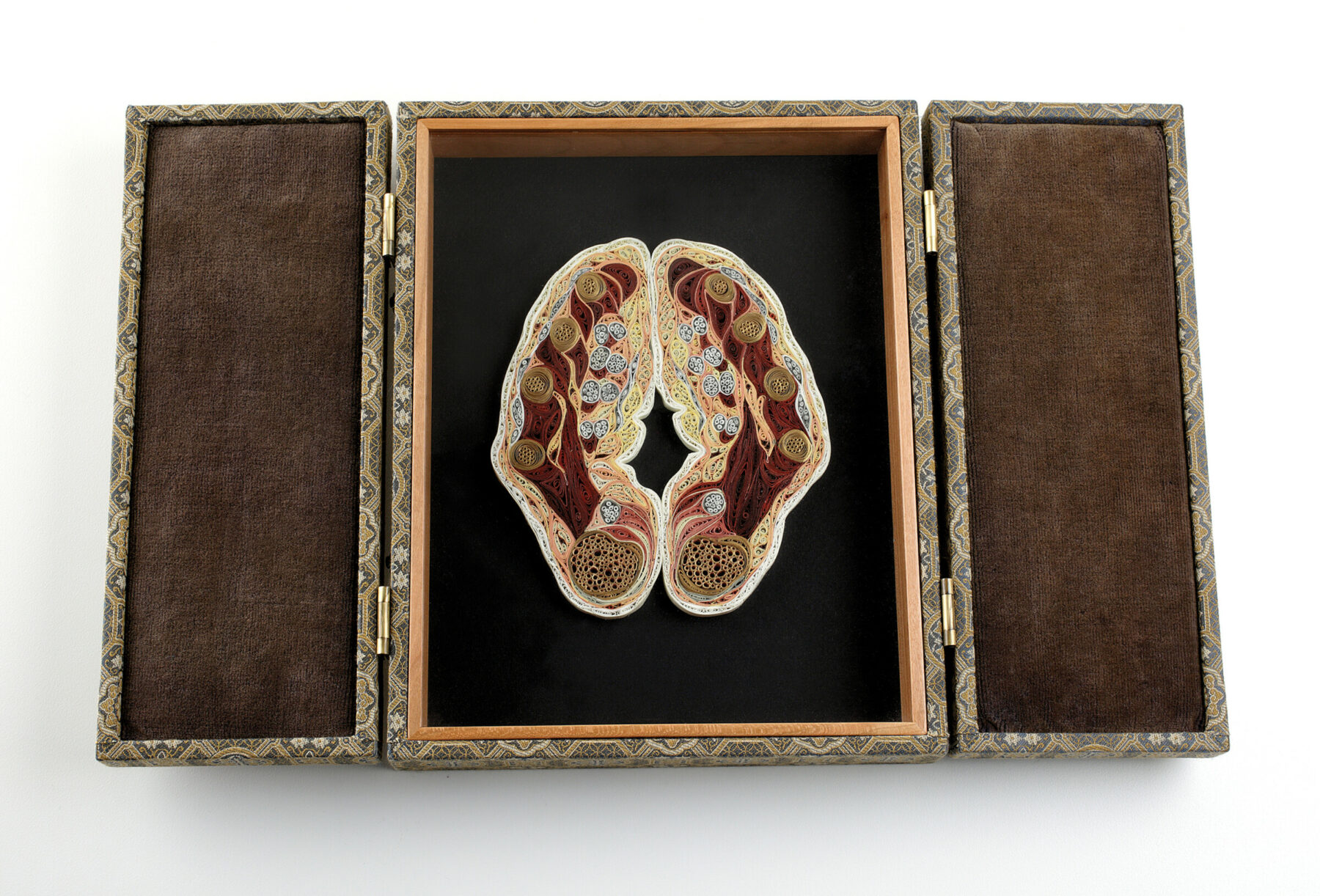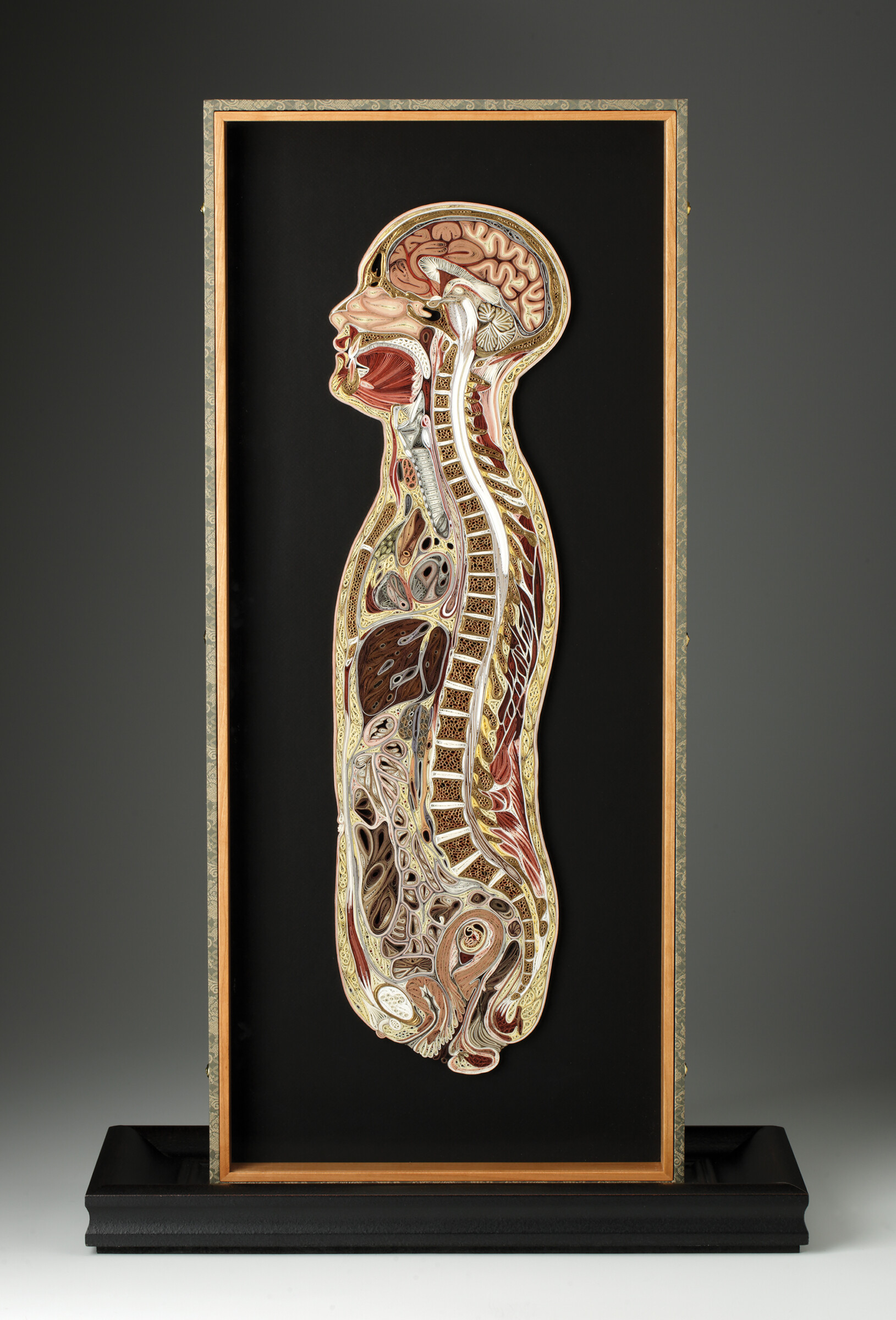Tissue Series

Quilling, the art of manipulating small strips of paper into elaborate designs and objects, is believed to have originated in ancient Egypt, although its precise origins are unknown. During the European Renaissance, quilling was practiced by nuns and monks who used it to create and decorate religious objects of devotion. Quilling gained popularity in eighteenth century England as a “proper” craft for ladies of leisure and schoolgirls. One can only imagine how these earlier practitioners would respond if they were to encounter the modern creations of artist Lisa Nilsson.
During the European Renaissance, quilling was practiced by nuns and monks who used it to create and decorate religious objects of devotion.
Trained as an artist and illustrator at the Rhode Island School of Design in Providence, Nilsson’s lifelong fascination with anatomy led her to take a break from her art practice in 2010 to attend a medical assisting program at McCann Technical School in North Adams, Massachusetts. Informed by this training, Nilsson began to apply the quilling technique to representations of the human body. She rolls and shapes narrow strips of Japanese mulberry paper and the gilded edges of old books, recreating images of cross sections of the body typically created by medical imaging technologies.
About the work Nilsson writes, “The fleshy, malleable quality struck me early on. It was the paper’s willingness to conform in shape to fill a cavity and its springy, bouncy quality when coiled that made me think of flesh and anatomy. In making these sculptures I aspire to a treatment of the body that combines the sensual pleasure and graphic strength of an art object, the informative and analytical approach of a scientific specimen, as well as the reverential and devotional nature of a religious reliquary.”




